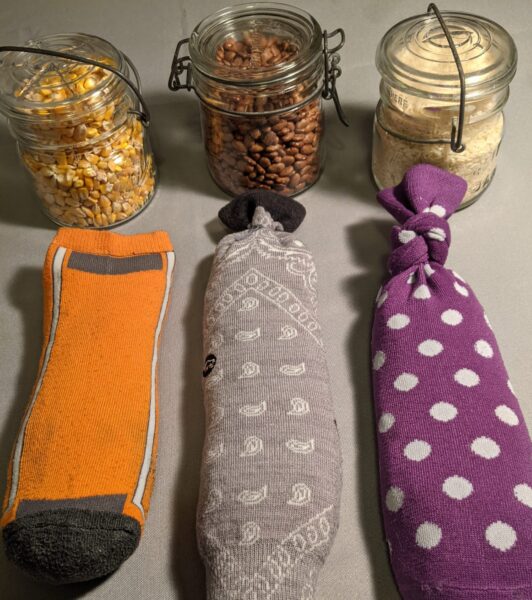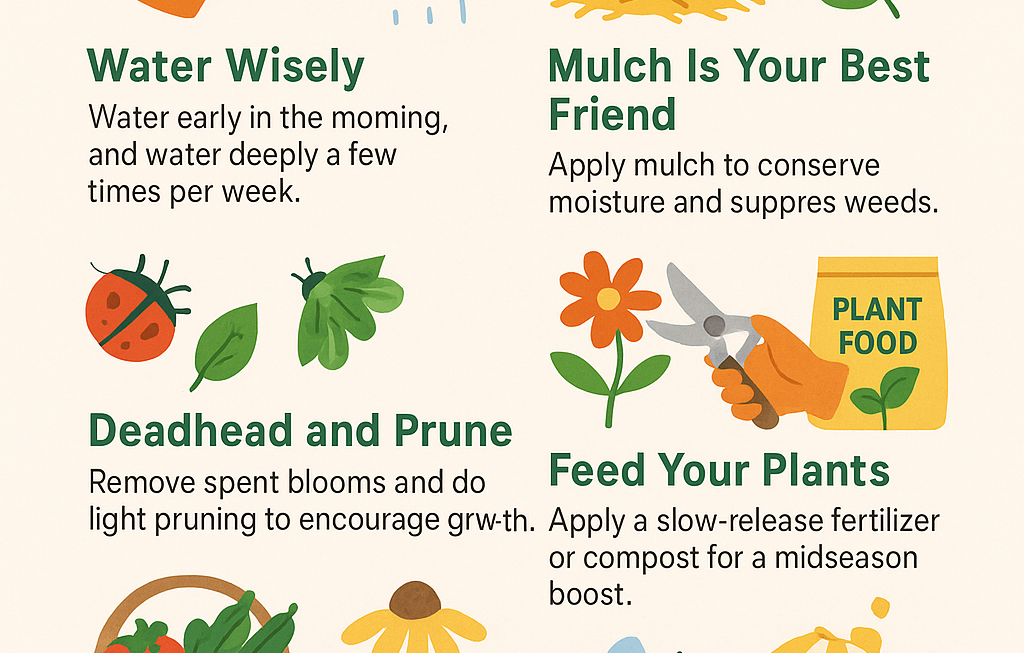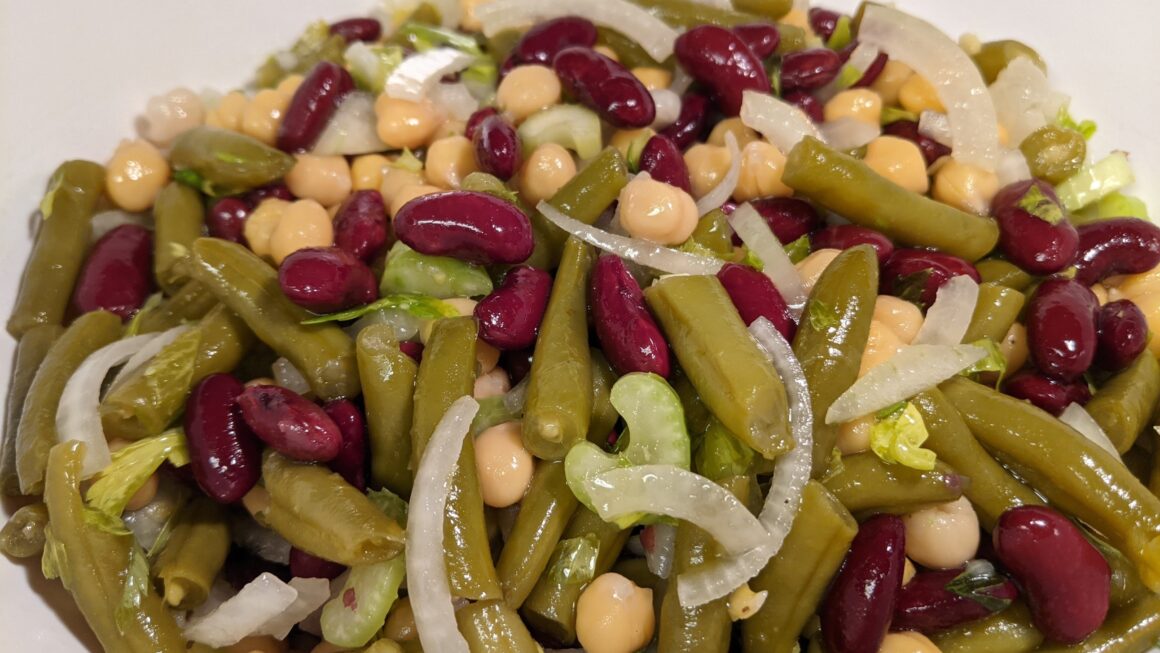This post may contain affiliate links. Please see my disclosure policy to learn more.
Easy ways to make microwavable heat packs, including no-sew methods. Heat packs can be used in so many ways. They can help relieve cramps, arthritis, headaches, or growing pains. Ease sore muscles after a workout or when feeling run down. Warm up your bed before going to sleep. They also make excellent bed warmers for your pets. Small packs can be kept in your pockets and used as hand warmers when outdoors.
Fillers
Three of the most common fillers for heat packs include rice, dried beans, or corn (feed or bird corn). These fillers are a great, inexpensive choice, and the packs you make with them can be used as either hot or cold packs.
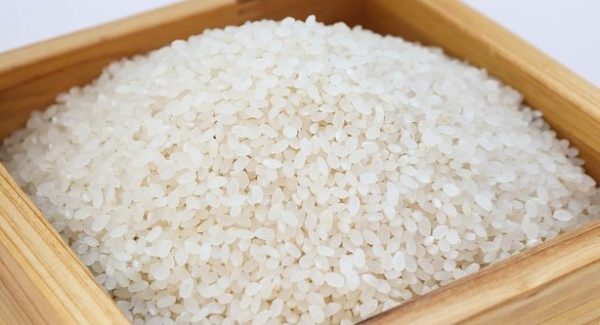
Rice – Long-grain white rice is one of the most common choices for heat/cold packs. White rice is usually easy to find in stores in bulk. Brown rice is more expensive than white rice, puts out more of an odor, and can leave a powdery residue, so I don’t recommend it. I also don’t recommend Instant rice, which can burn easily and does not smell pleasant when heated. All rice breaks down after repeated microwaving or freezing and can take on peculiar odors, so it will need to be replaced more often than some of the other choices.
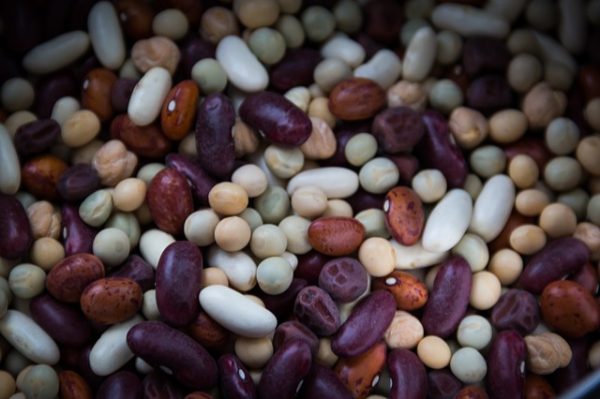
Dried Beans or Lentils – Usually easy to find in grocery stores in bulk, relatively inexpensive to replace, and it does not break down as easily as rice. Doesn’t hold heat as long as rice does, so you’ll need to warm it more often. It can take on strange odors after repeatedly being microwaved or frozen, so the beans will need to be replaced when that happens.
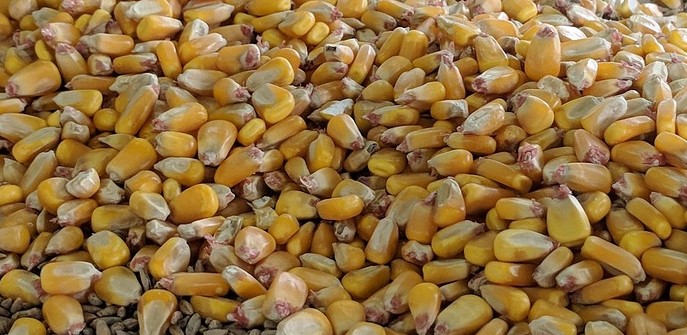
Corn – Whole feed corn, not Popcorn. Dry whole-feed corn can be microwaved or frozen over and over before breaking down. It is cheaper than rice or beans, around $7 for a 40 lb. bag. It can be found in the hunting or pet section of Walmart, or farm, garden, or pet stores. It can last for years before needing to be replaced. Eventually, the corn will dry out and need to be replaced.
No matter which filler you use, they will all smell of whatever you filled them with. Corn will smell like corn, rice will smell like rice, and beans will smell like beans. You can alter the smell somewhat by adding essential oils if you wish. Mix 10-20 drops of essential oil with your filler and let it sit for about 10 minutes until it’s absorbed, before filling your sock. You could also add dried herbs, such as rosemary, spearmint, lavender, cinnamon, or cloves, to your filler.
Fabric
Most natural fabrics can be microwaved safely. Cotton, linen, hemp, and wool are the best fabrics to use when making microwave-safe crafts. Synthetic fabrics should not be used as they can contain plastic, which can melt or become extremely hot and difficult to handle when microwaved. In some cases, the fabric could even catch fire. Use caution, and monitor anything you put in the microwave!
Assembly
If you sew, you can easily make permanent heat packs by folding a piece of fabric in half with the right sides together. Stitch along two of the three open sides to make a pocket. Fold the fabric right-side out and fill about 3/4 full with your choice of filler. Stitch the remaining side closed, backstitching to secure the seam.
Make some using recycled clothing items. Such as long socks, handkerchiefs, shirt sleeves, kids’ pants, tight leggings, or old flannel PJs. Even cotton dish or hand towels will make great heat packs.
But the easiest way to make a heat pack is to take a (non-holy) clean sock and fill it 2/3 to 3/4 full with your choice of filler. You don’t want to pack it too tightly; allow some room for the filling to move around, so you can form it easily to the area to be treated.
If you use a long sock, you can just tie the end in a knot. Otherwise, you can use a piece of cotton string, yarn, or ribbon to tie the open end of the sock closed. If you sew, you can sew the sock shut.
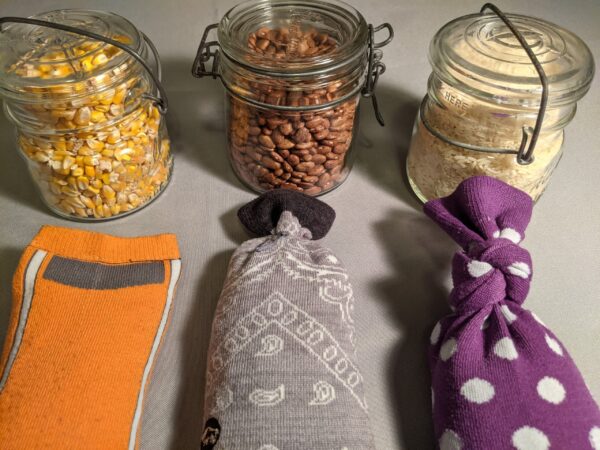
Heating
When heating a new hot pack, heat it up in 30-second intervals, testing after each interval, until you learn how long it takes to heat your pack without overheating it. Most packs take 1-3 minutes, depending on the filler and your microwave. Corn heats up much faster than rice! To prevent burns, always test the heat pack on the inside of your arm before applying it to other parts of your body. It should feel warm, but not overly hot.
Cold pack
To use as a cold pack, just place the rice, bean, or corn bag inside a Ziploc freezer bag and keep it in the freezer until needed. Take it out of the freezer bag when ready to use; the cold pack will mold to the body, providing cold relief for inflammation and swelling. Make one specifically to be kept in the freezer, and it will be cold whenever you need it.
- REIMAGINE TRADITIONAL: Craft your favorite recipes in a whole new way with Mahatma Extra-Long-Grain Rice. This long-grain white rice works with any flavor combination and always turns out light and fluffy!
- EASY RICE: Prepare rice according to package directions. On a stovetop, add 1 cup rice to 2 cups boiling water for 20 minutes or until water absorbs. Alternatively, microwave the above measurements on HIGH for 5 minutes, for 15 minutes at 50% power, then let stand for 5 minutes.
- TRUSTED VEGAN FOOD: Our bulk white rice is 100% vegan and vegetarian, but that's not all. It's free from gluten, MSG, and preservatives and verified by the Non-GMO Project. It's even kosher, so you can gather everyone you love around your table!
- REWRITE RECIPES: Start your day with cheesy rice omelets. Try a rice salad, soup, or veggie burrito bowl for lunch. Build dinner with our rice and a protein like chicken. You can even craft dessert—pudding, pie, or a traditional Latin-American arroz con leche!
- HEART & SOUL OF THE FAMILY TABLE: Mahatma rice is for all who give so much of themselves to provide their families with the best life possible. For close to 100 years, we’ve poured our heart and soul into every bag of quality rice and grains—so you can enjoy it with those you love.
- One 16 ounce bag of pinto beans
- Some of your favorite Amazon Fresh products are now part of the Amazon Grocery brand! Although packaging may vary during the transition, the ingredients and product remain the same. Thank you for your continued trust in our brands
- Excellent source of fiber
- Non GMO
- May contain soy
- Heating pad for back is made of a softer material with a flannel exterior, which is softer, skin-friendly and warmer,embracing different parts of the body, such as the neck, shoulders, back, abdomen, arms and legs, etc
- We heating pad have different sizes for you to choose from, including 12”x24”, 20”x24 ”and 17”x33”,you can find a heating pad size that is more suitable for you here,say goodbye to a single color tone, our heating pads come in a variety of colors for you to choose from.With 75 inch power cord,you can comfortably lounge on the couch or relax in bed
- Heating pad has 6 temperature settings,you can control the temperature of this electric heating pad via the controller,it heats up quickly in a short period of time so that you can enjoy the warmth faster
- Our electric heat pad is easy maintenance,machine wash-safe to make clean-up a breeze. Simply unplug and toss right in for a thorough cleansing before next use,you need to make sure it is completely dry before reassembling the unit
- The heating pad with overheat protection and 2 hours auto shut-off ensures your peace of mind after each use.And it’s also a great gift for your Mothers Day Gifts, Fathers Day Gifts, Birthday Gifts, Thanksgiving Day Gifts, Christmas Gifts,friend or family

